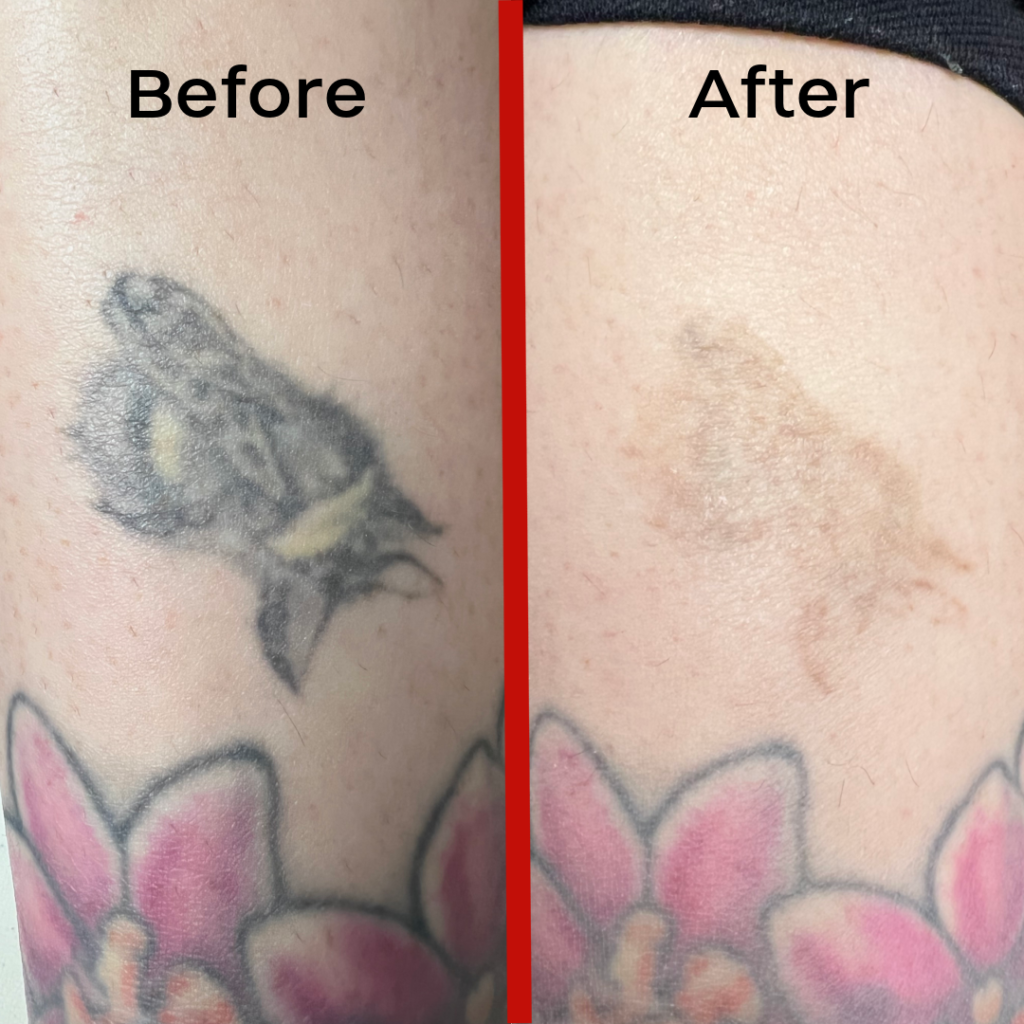Learn more about the process and figure out how long laser tattoo removal takes
Tattoos are permanent artwork in our skin…or that’s what we’ve been told. With new technology, it’s now possible to remove a tattoo. To many, this is great news. If you’re doing research and wondering how long laser tattoo removal takes you’re in the right place.
Tattoo removal typically takes longer than the original process of getting the tattoo. Removing the layers of ink from your skin is a process that’s well worth it. There are 2 main factors when we talk about how long it takes to remove a tattoo: how many sessions, and the length of those sessions.
How long does a tattoo removal session last?
The answer is: it depends. Obviously, larger pieces will take longer to treat, and smaller ones, less time. Some of my clients’ treatments take 30 seconds, and some can take 30 minutes or more depending on the area to be treated. The best part about laser tattoo removal is that it is a pretty quick for each session. Since we’re centrally located in Evergreen, Colorado many of my clients come from all over the state for their treatments. There are hotels, restaurants, shopping and outdoor activities all within just a few miles of the shop, so many of my clients find something fun to do before or after their treatments around town.

How many sessions does it take to remove a tattoo?
Several factors play into how long laser tattoo removal takes as far as sessions go, including: size, color, age of the tattoo, and it’s saturation. Saturation simply means how dark the tattoo is from when it was originally done, and how much ink was packed into the skin.
Other factors that influence how many sessions it takes to remove a tattoo include your overall health, the actual laser used, and the qualifications of the laser tattoo removal specialist that will be performing the procedure for you. There are big differences in the types of lasers available to us today for laser tattoo removal. It’s important to do your research on what kind of laser the clinic you’re considering uses as your skin’s health (and your wallet’s health) depend on it.
The laser used can affect your skin by giving you blisters or burns (which can be permanent). A less effective laser could also cost you more money and time, ending up in more sessions and a longer wait time to get rid of the tattoo you’re not fond of.
When you speak directly with your laser tattoo removal specialist, ask for an estimate from them on how many sessions they believe it will take to remove your tattoo or lighten it for cover up. A qualified professional will have a pretty good idea of the timeline, although different inks and pigments remove differently from the skin. To learn more about the factors that influence the timeline of your tattoo removal, check out this blog.
How long between tattoo removal sessions?
Usually we leave 6-8 weeks between removal sessions, which enables your body to flush out the ink particles and for your skin to recover from the process. Even though your skin’s surface may look and feel fine on the outside, the inner layers of your skin being treated by the laser need time to fully heal in between sessions.
Why does the type of laser matter?
Think about what the laser does to remove the tattoo ink from your skin. A laser blasts the ink into tiny particles using high heat from the laser- so it’s easy to understand how this could go from fine to NOT fine for your skin pretty quickly if the best laser is not used. We utilize the only true 3 wavelength q switched laser in the world…which means it has the ability to most effectively target inks and preserve the integrity of your skin. Our laser is the most effective and skin safe system available.
Removing a tattoo is your choice
I love helping my clients with laser tattoo removal because let’s face it…lots of us have tattoos we would rather forget about. I’ve yet to meet anyone that regretted starting the removal process (if done correctly). It gives you the freedom to make a choice on what used to be considered a permanent decision. Who doesn’t love a do over?!
Cheers,
Jim
